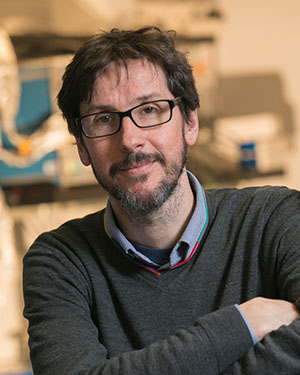Navigation Neuromodulation Center
Neuromodulation Center
Neuromodulation is a type of therapy that’s used to treat and enhance quality of life in individuals who suffer from severe chronic illness, such as persistent pain; spinal injury; spasticity; movement disorders; epilepsy; treatment resistant depression; stroke; diabetic neuropathy; cardiac, bowel or bladder dysfunction; and visual or auditory disorders.
In many cases, the use of neuromodulation can be life-changing.
The Role of Electricity and Magnetic Fields
One of the ways neuromodulation therapy can be delivered is by using electricity. The electricity can be given directly by electrodes implanted in the brain, or noninvasively through electrodes placed on the scalp. It can also be given by using magnetic fields applied to the head.
In each case, the device used can stimulate a response where there was previously none, (for example, a cochlear implant restoring hearing in a deaf person) or it can be used to stop a response where there was previously an uncontrollable one, (for example, a person with essential tremor, epilepsy or Parkinson’s disease.)
Range of Neuromodulation Therapies
The Stony Brook Neuromodulation Center provides a full spectrum of neuromodulation therapies including:
- Cochlear Implants
- Deep Brain Stimulation (DBS)
- Electroconvulsive Therapy (ECT)
- Responsive Neurostimulation (RNS)
- Spinal Cord Stimulation (SCS)
- Transcranial Magnetic Stimulation (TMS)
- Vagal Nerve Stimulation (VNS)
Choosing the right treatment plan, which may also include medication and counseling, should be based on a person's individual needs and medical situation, and under a doctor's care.
Access to Clinical Trials
For every existing neuromodulation treatment, there are also many more on the horizon. As an academic health center, our patients have access to many of the latest clinical trials. For example, Stony Brook is part of a randomized trial to develop vagus nerve stimulation for depression.
Recognized Clinical Excellence
Welcome to the Neuromodulation Center.
We are proud to say that Stony Brook Medicine has received the highest level of achievement from Healthgrades, as one of America’s 50 Best for 2025. This achievement places Stony Brook among the top 1 percent nationwide for overall excellence in care and is the only one on Long Island to be ranked among America's 50 Best.
The Best Hospitals Award comes on the heels of receiving numerous specialty awards, including the Neurosciences Excellence Award™ (2016-2025) and Cranial Neurosurgery Excellence Award™ (2020-2025). These recognitions reflect our deep medical expertise, commitment and track record of delivering excellent outcomes for our patients. So you can rest assured you will be in good hands.
We look forward to helping you find the neuromodulation therapy that’s right for your needs to help you enjoy life more fully.
Contact the Neuromodulation Center
Stony Brook Neuromodulation Center
- Neurology and Neurosurgery (631) 444-3448
- Psychiatry and Behavioral Health (631) 632-CHAT (2428)
- Speech and Hearing (631) 444-4191
Patient Portal
MyHealtheLife is a patient portal that provides you with secure, online access to your personal health information at Stony Brook Medicine. The portal permits you to review details of your own health records and medical history, as well as exchange health-related messages with your doctor. Get more detailed information on what’s included in the portal.




